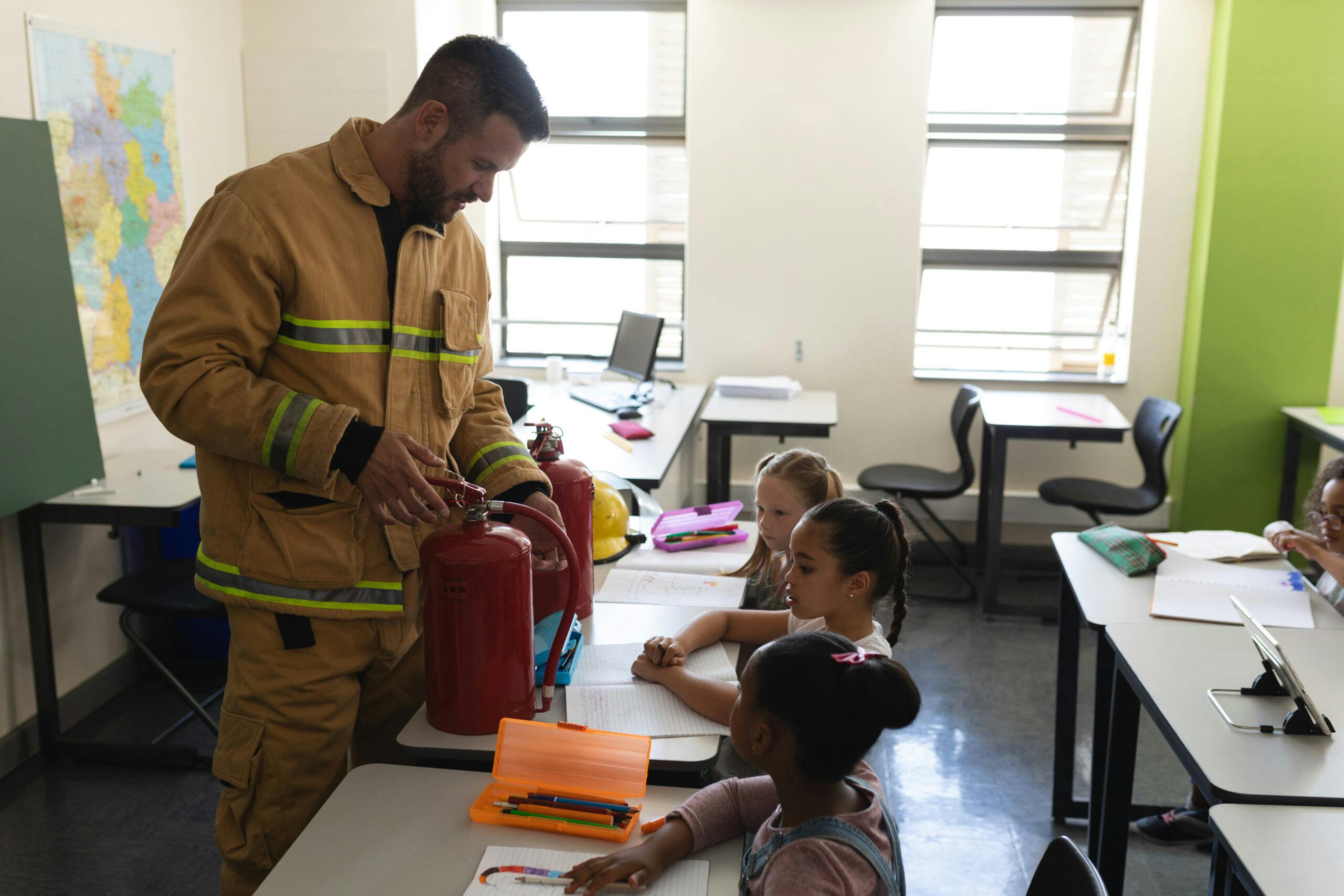Home


Resource Center
In times of crisis, the ability of first responders to communicate reliably can make all the difference. FirstNet, the First Responder Network Authority, has emerged as a critical solution designed to transform the way first responders coordinate during emergencies, but for FirstNet to work reliably, certain communications infrastructure must be in place. In this article, we’ll define what FirstNet is, how it operates, and why it’s crucial for public schools. We will also explore the role of Distributed Antenna Systems (DAS), like those provided by WilsonPro, in ensuring strong and reliable communication signals in schools.
What is FirstNet?
FirstNet is short for First Responder Network Authority. It was established by Congress in 2012 as an independent authority within the United States’ National Telecommunications and Information Administration (NTIA). It was founded in response to the communication challenges faced by first responders during large-scale emergencies, such as natural disasters and public safety incidents.
This authority was tasked with developing a dedicated wireless broadband network exclusively for first responders. The FirstNet nationwide network provides a secure and reliable communications platform for police, firefighters, EMTs, and other public safety agencies so they can immediately respond to emergencies.
How Does FirstNet Work?
FirstNet operates on the principles of priority and preemption. This means that during emergencies or times of network congestion, first responders using FirstNet are given priority access to the network. Their communications take precedence over other users, ensuring that crucial messages are not delayed or disrupted.
FirstNet supports a range of applications and services tailored to the needs of first responders, including location-based services, push-to-talk communication, and access to public safety apps. It protects sensitive information by prioritizing the security and encryption of data transmitted over the network.
Why FirstNet Matters to Public Schools
FirstNet is particularly important to public schools for a variety of reasons:
Enhanced Emergency Response: The ability to quickly and reliably communicate during emergencies in schools is vital. Sadly, recent history provides many examples of both natural and human-caused disasters in schools that have required immediate emergency response.
Interoperability: FirstNet promotes interoperability among different public safety agencies. This means that law enforcement, firefighters, and medical personnel can communicate and coordinate their efforts, even if they use different radio systems or technologies. In school situations where various agencies might respond to an incident, this interoperability is critical.
Broad Coverage: FirstNet is designed to provide nationwide coverage, including rural and remote areas. This ensures that first responders have access to critical communication capabilities wherever they are deployed, including in schools in less densely populated regions.
FirstNet in Action: Schools in Crisis
The importance of FirstNet becomes evident when examining real-world scenarios in which emergency responders are urgently needed in schools:
- Natural Disasters or Fires: In addition to natural disasters or fires that may occur during school hours, public schools often serve as emergency shelters for communities during hurricanes, tornadoes, and other crises. FirstNet allows emergency personnel to maintain communication in these critical environments, ensuring the safety of students, staff, and evacuees.
- Active Shooter Situations: Tragically, active shooter incidents in schools have become a real-world concern that schools must prepare for. FirstNet ensures that law enforcement officers and medical personnel can communicate seamlessly, even when multiple agencies respond to the same incident. This coordination can save lives.
- Medical Emergencies: When a student or staff member has a medical emergency, rapid response is essential. FirstNet enables emergency medical personnel to receive real-time information and provide instructions, improving the chances of a positive outcome.

The Critical Role of Communications Infrastructure in FirstNet
Clearly, FirstNet is crucial for ensuring school safety and peace of mind. However, its effectiveness depends on a strong and reliable signal.
Unfortunately, in many schools cellular signals can’t reliably reach devices inside the building. This may be due to distance from cell towers, or to physical obstructions like building materials, trees, or mountains. The best way to ensure reliable cellular signal inside the school is by installing a Distributed Antenna System (DAS), like those provided by WilsonPro, which have been installed in many public schools with great results.
What Are Distributed Antenna Systems?
Distributed Antenna Systems (DAS) improve cellular and wireless connectivity within buildings and other structures. They consist of a network of amplifiers and antennas that capture even relatively weak outdoor cellular signal, amplify it, and distribute it throughout a building or targeted dead zone. This ensures a strong and consistent signal on various bands, including FirstNet.
How Public Schools Benefit from DAS
Public schools, often sprawling and multi-story buildings, can present challenges for maintaining consistent cellular and wireless connectivity. This is particularly critical in emergencies where communication can make the difference between life and death. Here are some specific ways public schools will benefit from DAS:
- Enhanced FirstNet Coverage: As implied earlier, DAS systems can significantly boost FirstNet coverage within schools. This means that first responders inside the school building will have reliable access to the FirstNet network, ensuring effective communication during emergencies.
- Improved Overall Connectivity: Beyond FirstNet, DAS systems enhance connectivity on all cellular bands. This benefits not only first responders but also students, staff, and visitors who rely on cellular devices to learn, collaborate, and communicate.
- Peace of Mind: Knowing that there is a robust and consistent cellular signal in place can provide peace of mind to school administrators, staff, and parents, especially during times of crisis.
Transforming Public School Safety
Public school safety is greatly enhanced by the reliability and effectiveness of FirstNet. However, the efficacy of FirstNet hinges on a strong cellular signal. WilsonPro’s Distributed Antenna Systems (DAS) ensure schools have that signal. This represents a transformative safety development for any school.
Let us design a WilsonPro solution that meets your current and future connectivity needs. Learn more at wilsonpro.com or contact us for a free consult (800-871-1612).

